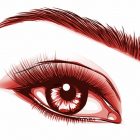In the Spotlight
Tom Cockle: Interview
October, 2016
We all have casual hobbies that fill our off-hours, but Tom Cockle has turned his into more than just a pastime. Part artist, part historian and part craftsman, Tom has spent decades of evenings and weekends constructing World War II-era model tanks. It’s a pretty original hobby, and one that’s established him as a recognized subject-matter expert. In fact, Tom’s become such an expert that he’s been able to write multiple books on the topic and has even won a number of international awards for his builds. Not surprisingly, Tom’s expertise makes him a valuable resource for publishers and modellers all over the world. But despite that international attention, he still proudly calls St. Albert home. This month, we had the pleasure of chatting with him. Here’s what we learned.
t8n: How did this hobby start out for you?
TC: Well, I’ve always had an interest in World War II stuff and have been building models since I was a kid, but the two didn’t really come together for me until later in life. I lost interest in models in my late teens and didn’t really manage to get back into it until my 30s. I walked into a hobby shop one day and was just taken aback by how far the craft had come since I was a kid. I was able to look at it with new eyes. I joined a club in Edmonton called the International Plastic Modellers Society, and I’ve been doing it ever since.
t8n: Why do you focus on World War II-era model tanks specifically?
TC: It was a series of coincidences, actually. There was this collection of books that had come out in the 1970s, which was simply called The Second World War. I was reading one about the battles in North Africa when a friend from work came in with a small booklet from a modelling company out of Texas, Squadron Signals. I was flipping through it and saw that they were making models of the exact tanks I had been reading about. He took me to a shop on Whyte Avenue where they were selling them, and that was that.
When I was a boy, the only models you’d find were planes and ships—maybe a dozen or so generic armoured tanks. But when I walked into that shop, I was just amazed by the variety that had become available. I’ve built Russian, American and British models at different times, but eventually I found myself really wanting to focus on one area. And that was the German side of things.
t8n: How much research goes into the construction of a single model?
TC: I spend maybe two or three hours going through all of my reference books—I’ve got quite a few at this point. Usually I’ll just see a picture of something that has interesting markings or some other distinct feature, and I’ll say, “This is what I want to build.” Then it’s just a matter of buying the specific decals and looking at photographs to get everything right. After that, it’s just a question of how detailed you want to make it.
Before the war broke out, the Germans had a method of painting their vehicles that gradually changed over time. You can get a pretty good idea of the specific year of production based on that. The new tanks, even if they were the same model, were painted in new colours, so you can always tell the year. It can get a little dicey towards the end of the war because records were lost and all that. I moderate an online discussion group on Axis war machinery, and that’s one of the most frequent questions, “What colour should this be?” Lots of fights can break out over that kind of stuff.
t8n: Where do you do your building?
TC: I’ve had workshops in all of the houses we’ve lived in over the years. In this latest house, I had a room built that has the lighting I need, the wall space and even a fume vent for my paints.
t8n: How did you make the transition from modelling into writing?
TC: One of the modellers in our club was an artist for an American hobby-magazine publisher. The first meeting I went to, he was doing a demonstration on figure painting, and I wanted to get into it, too. I had my first magazine article published in 1984. Back then it was the only way to show off your work. Since then I’ve had book publications in England, I’ve helped translate some international modelling books and I’ve acted as an advisor for a company out of Hong Kong. The global modelling community is just huge.
t8n: The historical aspect is obviously a big draw for you. Do you get into the mechanics of these tanks as well?
TC: Oh yeah. Building tanks is all about getting into the machinery. I read books on specific campaigns and that kind of thing, but the majority of my reference library is about the construction of these vehicles and how they move.
t8n: What kinds of awards have you won for your work?
TC: I’ve entered a lot of contests and that sort of thing over the years. I don’t do it too much any more, but only a few years ago I was heading to a lot of international meets over in the United States and England. I would take some of my pieces to show off, and they’d often win “Best of Show” awards in a few categories. They were custom -models that just weren’t available on the market at the time. People appreciated those finer details.
t8n: What kinds of plans do you have for modelling in the future?
TC: I’ve got a new book that I’m working on that will be published out of Hungary. But as long as I’ve got my faculties about me, I’ll be working on new models and modelling projects for about as long as I’m able.
St. Albert may be a relatively small city, but never let it be said that we don’t have our own community of experts—people like Tom who devote their off-hours to the perfection of their craft, whatever that craft may be. t8n













